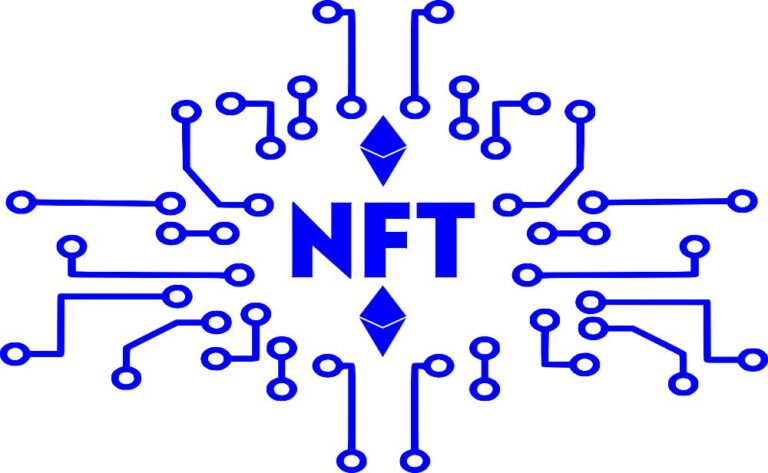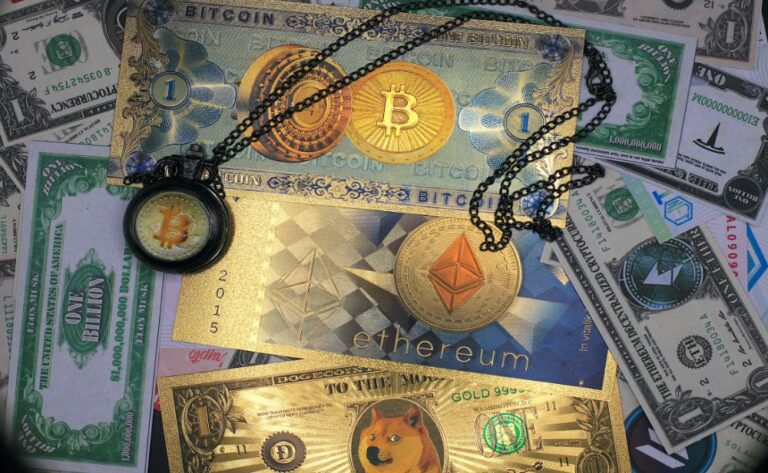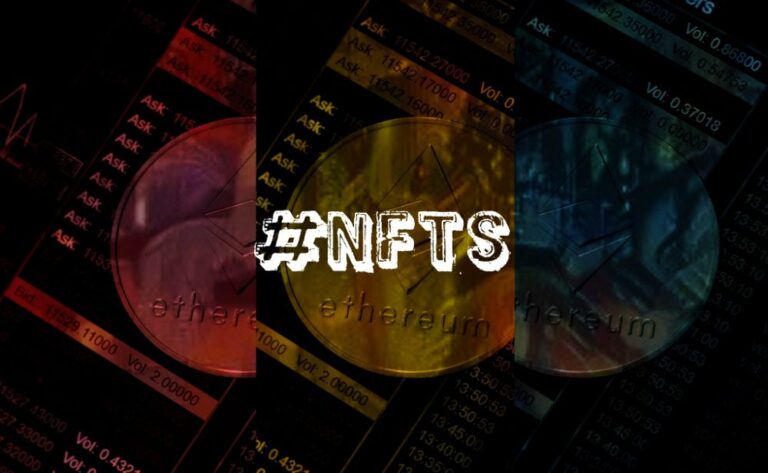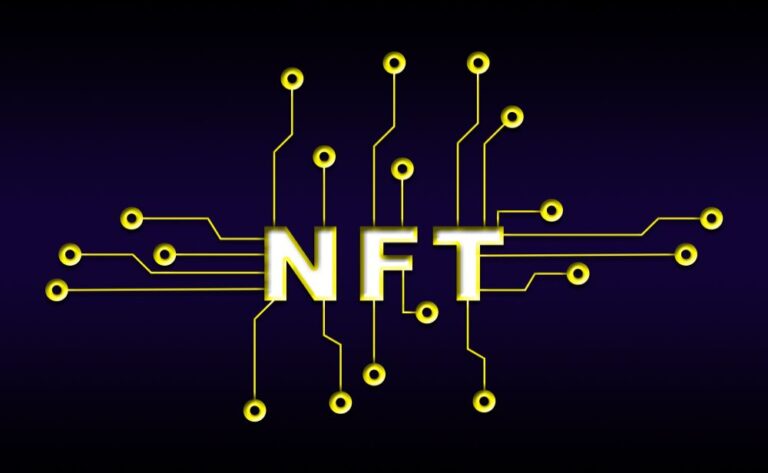
Disclosure of Advertisements This article or post may mention items or services offered by one or more of our sponsors, advertisers, or partners. When you click on links to those products or services, it’s possible that we will earn compensation.
In the year 2020, the volume of trade in NFT was only $21.7 million. In 2021, it skyrocketed to a staggering $40 billion.
Many purchasers of NFTs do so just with the intention of showing support for their favorite independent musicians. And still others might be doing it simply to stock their virtual art galleries or to stake a claim to the bragging rights that come with “owning” popular memes and gifs.
Notwithstanding this, a sizeable proportion of buyers of NFTs are genuine investors who view NFTs as the subsequent gold rush of the digital age. And when you consider that the secondary market for NFTs surpassed $15 billion in 2017, a good number of them are doing rather well financially.
When investors begin trading assets in order to make enormous profits, the question arises as to whether or not these assets are securities. Should there be rules governing them? In the event that this is not the case, what kinds of errors would bring NFT investors directly under the scrutiny of the SEC?
Let’s look into the question of whether or not NFTs should be classified as securities.
The Abbreviated Version:
• Non-traditional financial instruments are not considered securities since they fail the Howey test.
Notwithstanding this, there are several circumstances in which non-traditional assets behave extremely similarly to securities.
• Although the SEC does not now consider NFTs to be securities, this stance may shift in the near or far future.
What do you mean by NFTs?
Non-fungible tokens, often known as NFTs, are distinguishable data strings that are stored on a blockchain.
The blockchain is the location where NFTs are created and stored, therefore gaining an understanding of them requires first knowing where they are created.
Blockchains can be thought of as enormous digital ledgers that are stored online. They can be viewed and new content contributed to, but not modified in any way. Imagine a massive stone wall in the middle of the town square, on which individuals can scratch important information, but they can never remove the writing of their neighbor.
The first block of the Bitcoin blockchain was created in early 2009, and its operation is ongoing to this day. However, it can only be used to store information related to finances. Users of Ethereum have the ability to store virtually any type of data on the Ethereum blockchain. It makes it possible to store non-fungibles, which are essentially one-of-a-kind strings of code.
The ramifications of putting one-of-a-kind data on a blockchain, which is both secure and decentralized, are virtually limitless; for example, we might maintain medical records, legal data, and, of course, ownership information for works of art there.
When you purchase a non-fungible token (NFT) on OpenSea, you are not purchasing a.JPG file or even the copyright to utilize a particular piece of artwork. You are merely purchasing a string of data that will be stored on the blockchain and will read “Chris owns NETFLIX 2087 by Beeple.”
To summarize, non-fungible tokens (NFTs) are “certificates of ownership” that are saved on the Ethereum blockchain. These “certificates” verify that a specific individual or organization “owns” a piece of digital artwork.
What Exactly Are These Securities?
A financial asset that can be bought and sold is referred to as a security. Examples of common securities include banknotes, options, futures, stocks, and bond issues. Stocks can also be traded.
It is important to note that all securities are fungible, which means they can be exchanged for one another. Your ten shares of AAPL are equivalent to my ten shares of AAPL in terms of value. There is no discernible difference between one share of AAPL and the next, just as there is no difference between a quarter and a dollar bill.
Equity, debt, hybrid, and derivative investments are the four distinct categories of available securities.
Equity securities are investments that represent a proportional ownership stake in an organization, such as a company. If you’re thinking it sounds an awful lot like stock, you’d be right. The most typical illustration of an equity security is a company’s stock, which is also known as shares.
Debt securities are loans that have predetermined terms about the amount, the date on which they are to be renewed, and, of course, the interest rate. Bonds are the most common type of debt security that people are familiar with. Bonds, much like other forms of debt security, confer on their owners the right to receive interest and principal payments on a regular basis.
Securities that are classified as hybrids incorporate aspects and qualities of more than one form of security. The convertible bond is a type of hybrid asset that is frequently used as an example since it is a form of debt security that may be converted into a set number of shares.
The price of a derivative is calculated based on the value of an underlying asset. Derivatives are a type of securities. For instance, when you buy oil futures on the NYMEX, you are not actually purchasing the oil; rather, you are purchasing the right to acquire the oil at a certain price at a later date (well, technically, the obligation). Because it was determined by the current price of oil, the oil futures contract is an excellent illustration of a derivative product.
So, Should We Consider NFTs Securities?
Let’s go down the list one item at a time to determine whether or not NFTs qualify as securities.
1. NFTs do not fulfill the requirements to be considered debt securities. They have almost no genetic connection to a bond, and they do not represent a loan that was given to or taken out by the artist.
2. If we follow this line of reasoning, then exchange-traded notes do not qualify as hybrid securities either.
3. What do you think of derivatives? The NFTs are far too straightforward to be considered derivatives. They might be difficult to understand conceptually, but utilizing them effectively is not too difficult at all. They are merely works of art and do not stand in for any other underlying asset in any way.
That leaves equity securities as our only option. It is possible that making a comparison between shares of NVIDIA and a digital artwork depicting a cat wearing a cowboy hat may appear weird. However, there are a surprising number of similarities between equities and NFTs:
• They both signify ownership in the business.
• Values are determined by market forces that are external to the company
• It is anticipated that both of these investments will increase in value (in certain instances), and,
• Both are considered to be solid “investments” by a number of different players
Collectors of non-fungible tokens have, however, been successful in warding off the attention of regulators by reiterating a straightforward defense: “Hey, bro, they’re just art.”
Surprisingly, this defense is successful. Despite the fact that NFTs have characteristics of both products and securities, the SEC does not consider them to be securities (at least not at this time) because they do not pass the Howey Test.
Does the Howey Test Approve of NFTs?
According to the Securities and Exchange Commission (SEC), in order for an asset to be considered a security, the sale of that asset needs to be able to pass the Howey test.
The Howey test can be traced back to a case that was heard by the Supreme Court in 1946 called SEC v. W.J. Howey Co. In the 1940s, the Howey Company was in the practice of selling citrus grove land in Florida to locals, leasing back the land in order to maintain access, and then selling the fruit that was grown on the property to generate a profit, which it then split with the landowners.
It is abundantly clear that a contract for investing was involved in this leaseback arrangement. However, Howey did not file the transactions with the Securities and Exchange Commission. The Howey test was developed by the SEC in order to assist future businesses in avoiding making the same error.
The Howey test states that in order for a transaction to be considered a “investment contract” (and the asset that is being traded to be considered a security), it must contain all three of the following components:
1. The act of putting money into something.
2. A common enterprise (i.e. shared goals between investors and those selling the asset)
3. A realistic anticipation of profits resulting from the labor of others
The Securities and Exchange Commission (SEC) has applied the Howey test in order to determine that certain initial coin offerings (ICOs), also known as initial public offerings (IPOs) for cryptocurrencies, qualify as investment contracts. This paves the way for the underlying cryptocurrency to be classified as a regulated security.
Why NFTs are not considered to be securities
NFTs are allowed to pass the Howey test despite the fact that they do not fulfill the third criteria of the test.
You see, in contrast to the makers of certain fraudulent cryptocurrencies, which I won’t name, the people who develop NFTs typically don’t refer to their creations as “investments.” They have them minted, tweet about them to build interest, and then sell the coins as a product.
After that moment, the restricted supply of their NFTs combined with the high demand for them could cause some of them to increase in value. However, the designer views what they are doing as merely the sale of things and not as an investment of any kind. There is no agreement in writing between the buyer and the seller that the price of the NFT will skyrocket at any point in the future.
This distinction is extremely important since openly referring to your digital asset as “a good investment” is a certain way to provoke regulatory attention and end up being categorized as a security.
To summarize, although NFTs may have many similarities with stocks, they are not considered securities because buyers do not buy them with the intention of making a profit from their purchase. Buyers of an NFT are not initially sold the idea that the investment will result in capital gains.
Instead, non-fungible tokens (NFTs) are only marketed as art and collectibles. Just when their value rises does not automatically make them eligible for inclusion in the category of securities.
Should Individuals Who Invest in NFTs Be Concerned About Regulation?
Investors in NFTs do not need to be concerned right now…but they should be vigilant. Given that the SEC has already begun to regulate other forms of digital assets, NFTs are already operating on the razor’s edge. The following is a short list of the potential regulatory pitfalls that could be encountered by non-traditional trading entities:
Redistribution of Profit through Secondary Sales
She inserted a clause into the contract indicating that she would receive a portion of the proceeds from the sale of the item even if it was sold a second time.
These kind of requirements are becoming increasingly prevalent among artists who are trying to create passive income from the sales of their NFTs. They are also catching the attention of the SEC because they imply a shared venture and anticipated profits in the future.
The tertiary or secondary market
Because NFTs are not marketed to consumers in the same way that investments are, they are exempt from regulatory scrutiny.
But what about the individuals who put their money into them? What happens if they pitch them as suitable investments in an effort to attract more investors and falsely inflate their values?
Secondary sales of NFTs hit $15 billion in 2021, which begs the question: how much longer until a certain segment of purchasers, the investors, become too vocal for authorities to ignore them?
Marketing for Corporations
People have a tendency to forget that Bitcoin began as a great new technology much like NFTs did; it was never intended to become an investment at any point in its history.
And yet, after values soared, markets arose to promote trade; many of these marketplaces didn’t hesitate to market their commodities as “investments,” which led to the rise of the term “investment.”
Because Bitcoin lacks any form of centralized leadership or control, it has been able to avoid being classified as a security.
NFTs, on the other hand, contain traceable paper traces that link back to the people who created them. If you ever mint an NFT on a website that promotes it as an investment, the Securities and Exchange Commission (SEC) could come after you both.
Fractionalization, also known as Partial Ownership
Historically speaking, the SEC recognizes the ability to buy a fractional share of an asset as a clear indicator that the item in question is intended to be used as an investment vehicle.
When you buy one eighth of one hundred twenty-sixth of a picture, though, the claim that “it’s just art and I like it” breaks apart very quickly.
For example, the company Masterworks, which facilitates the sale of fractional ownership interests in tangible works of art, is required by the SEC to record all of its transactions.
How long do you think it will be before the developers of NFTs and investors decide to perform a “stock split” in order to entice further purchasers?
The Crux of the Matter
It is possible that the SEC will not regulate NFTs as securities in the near future. But I have a feeling things will eventually shift if the investment community doesn’t exercise sufficient caution.
In the event that the SEC decides to start regulating NFTs, in my opinion, they will regulate each and every one of them. They are not going to pick and choose as they do with cryptocurrencies because doing so would require too much labor.
Do you believe that the SEC ought to start taxing NFTs and classify them as securities at the same time? Please let me know your thoughts in the comments. I’d love to know what you think of this!





